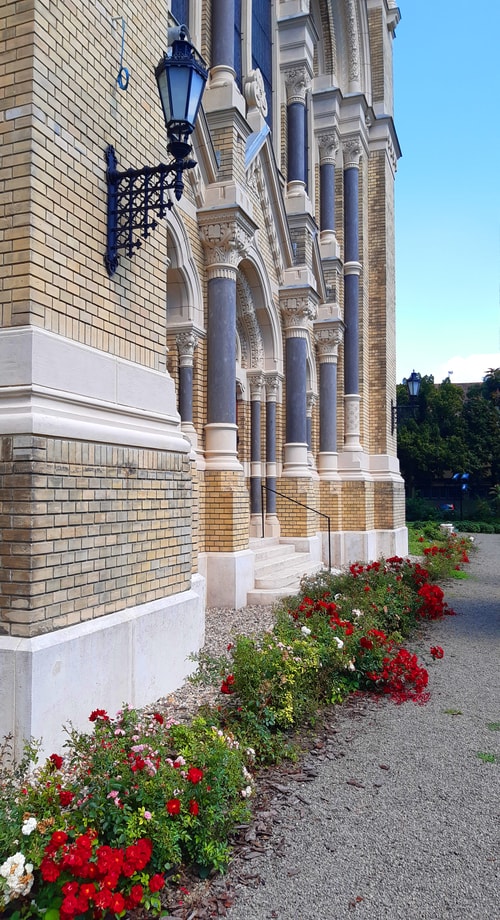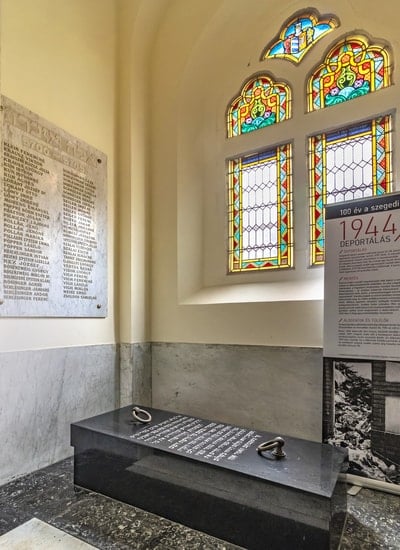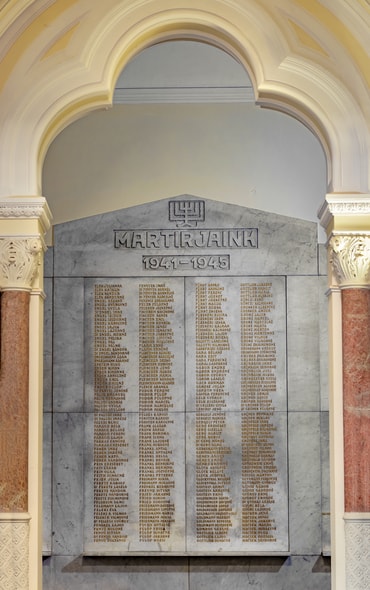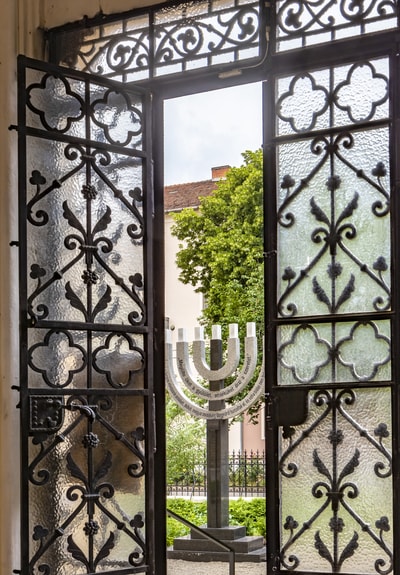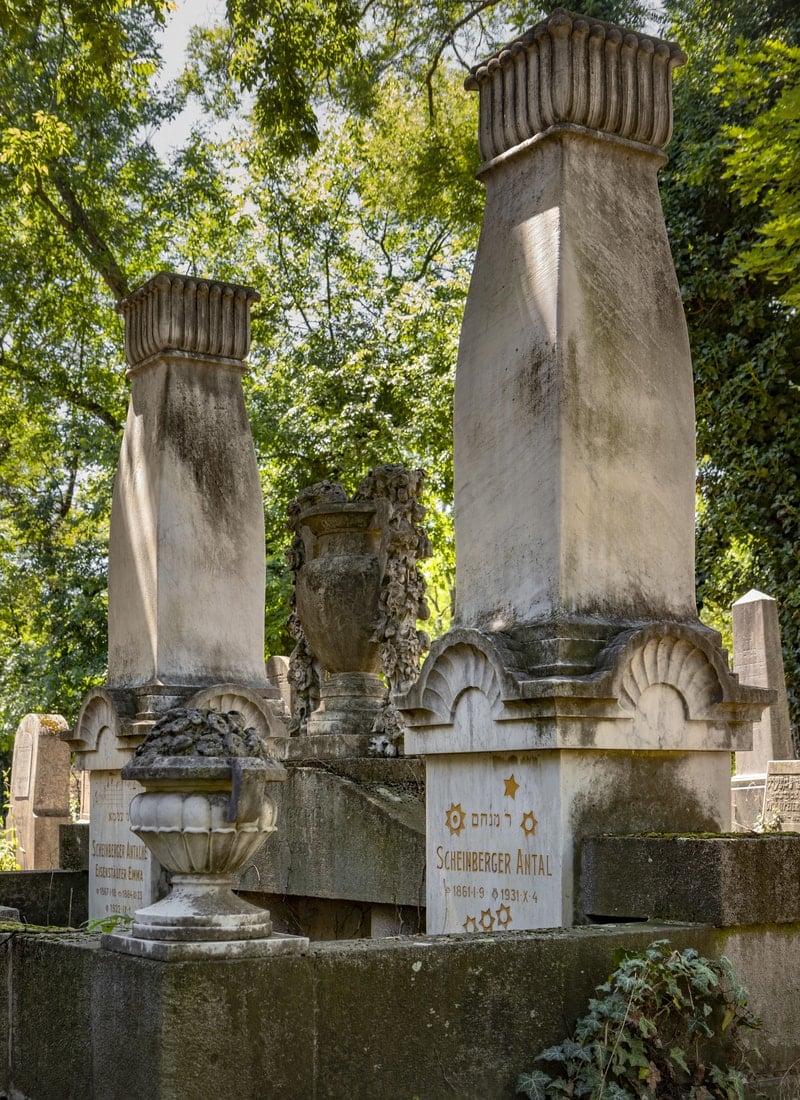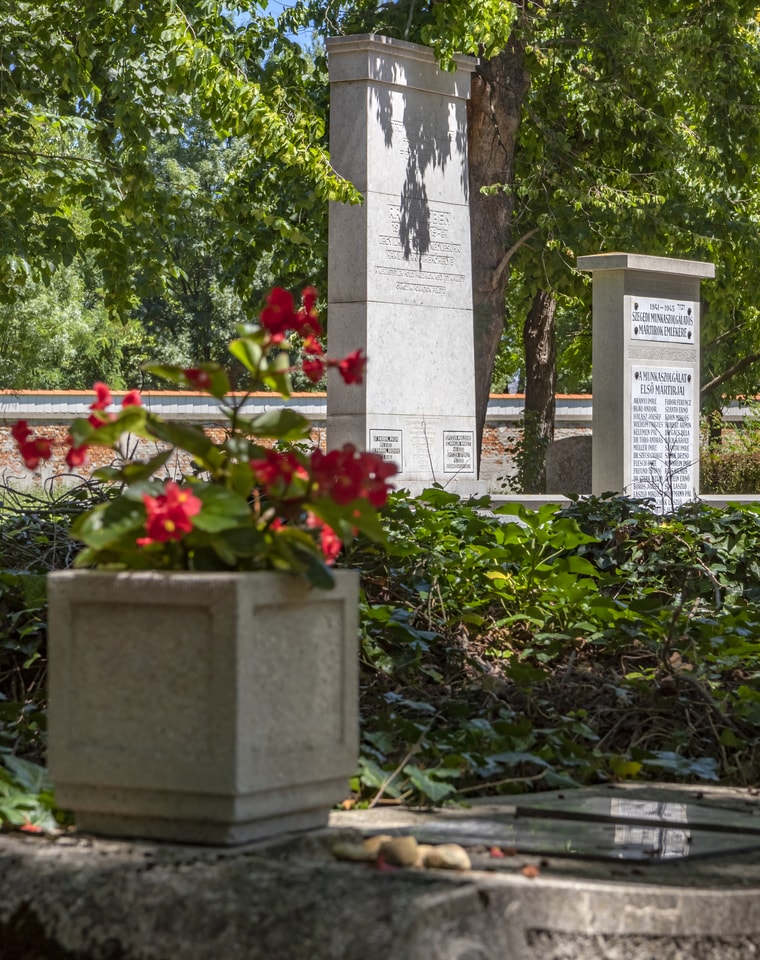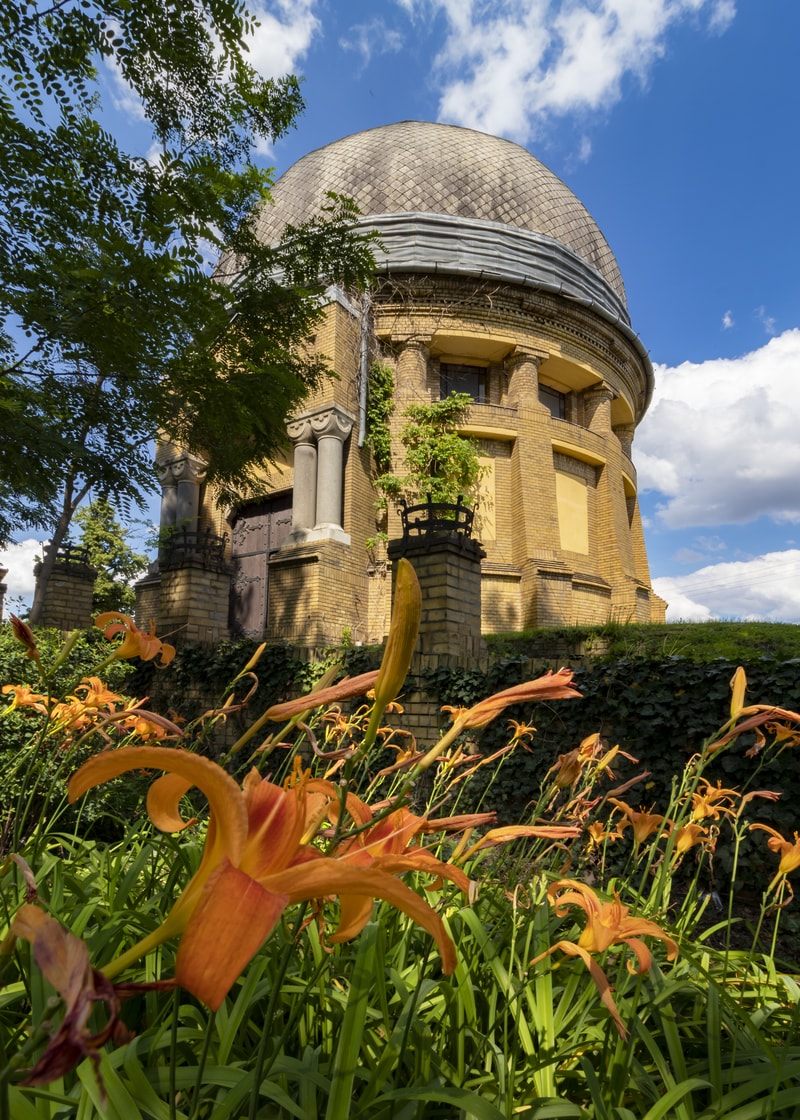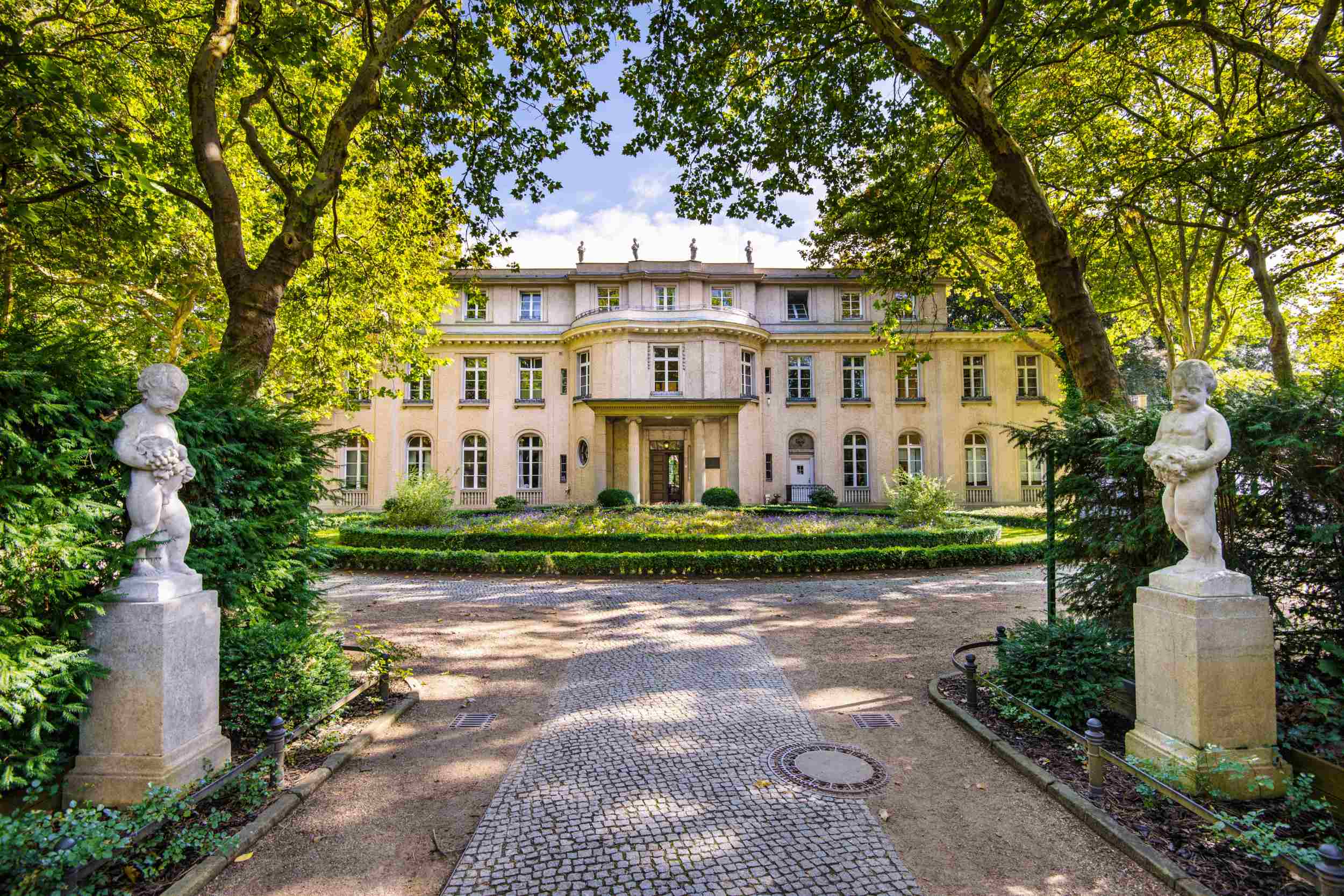The garden was formed from biblical plants based on the concept of the famous rabbi and botanist, Immánuel Löw. The plants of the garden were originally planted in 1902 and the garden was renewed in 2017.
Site Tag: Attraction
Holocaust Memorial Tombs
A short report appeared on the inauguration of the two symbolic memorial tombs of deported Jews in the local daily newspaper Délmagyarország on 23 September 1947: “There were almost 2000 Jews who were destroyed by fascist madness, who not even had a symbolic grave. They were symbolically buried in black marble coffins in the hall of the synagogue by the Jewish Community.” The memorial tombs can be found in the entrance hall of the New Synagogue
Memorial Boards of the Soah Victims
In the following years of the Soah, the most important issues were restarting the religious and community life by the surviving Jewish community members in Hungary. Nevertheless, special emphasis was put on individual and collective grief and remembrance, which were eased by different kinds of memorial events and soon erected monuments. The memorial can be found in the entrance hall of the New Synagogue
Szeged Menorah
The four-meter-tall menorah was erected on 14 September 2014 to commemorate the 70th anniversary of the deportation of Jews from Szeged and its surrounding areas. The first Jewish ghetto was created around the synagogue and was bordered by Bolyai, Jósika, Hajnóczy and Gutenberg Streets and Bartók Square. The menorah can be found in the yard of the New Synagogue.
Symbols in the cemetery
Symbols bear a great significance in Jewish art, which are manifested in the Jewish cemetery of Szeged, having numerous richly decorated tombstones, representing different artistic styles of distinctive eras. In certain cases, the form of the tombstone itself is a symbol. These symbols as well as the epitaphs based on old traditions serve an important basis of information about the deceased person, Jewish religion and the Jews of Szeged.
The Randegg Memorial
In Jewish cemeteries, there is a long tradition of erecting monuments for war heroes. Hence, monuments were also raised for the victims of the Holocaust in the Jewish cemetery of Szeged. Besides, it is also a Hungarian tradition to include the names of the heroes as well as those killed in the Holocaust on the family’s tombstone.
Ciduk Hadin House
On the right side of the cemetery, we can find the Ciduk Hadin House, the mortuary with its brick covered walls overlooking the monuments of the cemetery, designed by the same architect, Lipót Baumhorn, who made several of the city’s major buildings including the New Synagogue and the headquarters building of the Jewish Community in Gutenberg Street.
Mountain Jews Museum
The mission of the Mountain Jews Museum is multifaceted. Primarily it is to acquaint all those interested in a unique mini-civilization, combining the achievements of Jewish culture and cultures of the peoples of the Caucasus. The museum aims to broadcast universal human values, and thereby we hope will serve not only as a source of knowledge about the material and spiritual culture of Mountain Jews, but will also provide a space for interethnic and inter-religious dialogue. The doors of the museum will be open to anyone who is willing to share our values, regardless of nationality or religion.
The Mountain Jews Museum is located in the old restored Karchogi synagogue which was
closed during the Soviet years. The initiative to create a museum of the Mountain Jews is from natives of the ‘Red Village,’ God Nisanov, Zarakh Iliev, and German Zakharyaev.
The creation of a common concept and collection of exhibits was carried out by the International Charitable Fund STMEGI – the largest organization uniting
Mountain Jews of the whole world.
House of The Wannsee Conference
The House of Wannsee Conference is located on the Wannsee River, on the outskirts of West Berlin. This historical landmark was built in 1915 for Ernst Marlier, a prominent businessman. He was arrested in 1940 for embezzlement and sold his property. During the Nazi era, the Wannsee House came to be used by the SS Security Service, the Nazi intelligence service. It was at the villa that SS officers planned the future of the Third Reich. After the war, the house was used as a residence, until the August Bebel Institute acquired the building in 1947. It was then used as a school and hostel for the Berlin Social Democratic Party, until 1988 when it became the memorial site it is today.
The Wannsee Conference was a meeting of senior government officials of Nazi Germany and Schutzstaffel (SS) leaders, held in the Berlin suburb of Wannsee on 20 January 1942. The purpose of the conference, called by the director of the Reich Security Main Office SS-Obergruppenführer Reinhard Heydrich, was to ensure the co-operation of administrative leaders of various government departments in the implementation of the Final Solution to the Jewish question, whereby most of the Jews of German-occupied Europe would be deported to occupied Poland and murdered. Conference participants included representatives from several government ministries, including state secretaries from the Foreign Office, the justice, interior, and state ministries, and representatives from the SS. In the course of the meeting, Heydrich outlined how European Jews would be rounded up and sent to extermination camps in the General Government (the occupied part of Poland), where they would be killed.
Auschwitz survivor, Joseph Wulf, is really to thank for the inauguration of the Wannsee House as a memorial site. Mr. Wulf published the first comprehensive collection of documents from the Nazi regime, and suggested creating a documenter center in the Marlier villa. Although Wulf had wide public support, the Berlin Senate was slow to accept his proposal. Sadly, Joseph Wulf did not see his vision realized, as the man committed suicide in 1974.
Jewish Gallery
The Jewish Gallery Omanut is located in Tempelhof, on Kaiserin-Augusta-Straße. The gallery is an expansion of the original gallery, which was opened in the 1990s and displayed art by Eastern European immigrants. It’s run by ZWST, the Central Welfare Office of the Jews in Germany. When the gallery was opened by the Omanut Art Studio in 2016 and it was established to display contemporary Jewish art by both Jewish and non-Jewish artists. In addition to the art studio, the Jewish Gallery Omanut provides an interactive workshop.
The Jewish Gallery Omanut strives to be inclusive of artists with intellectual disabilities. The Gallery includes an exhibition with art displays created exclusively by people with mental illnesses.
